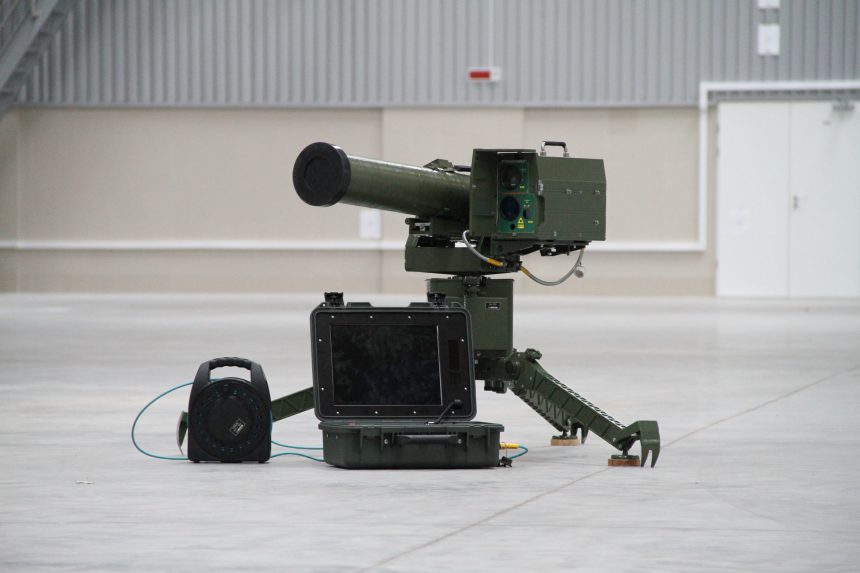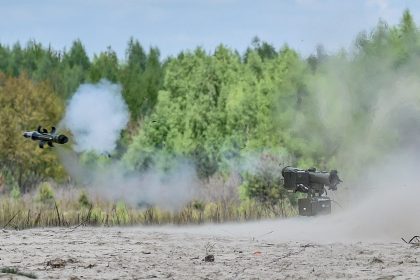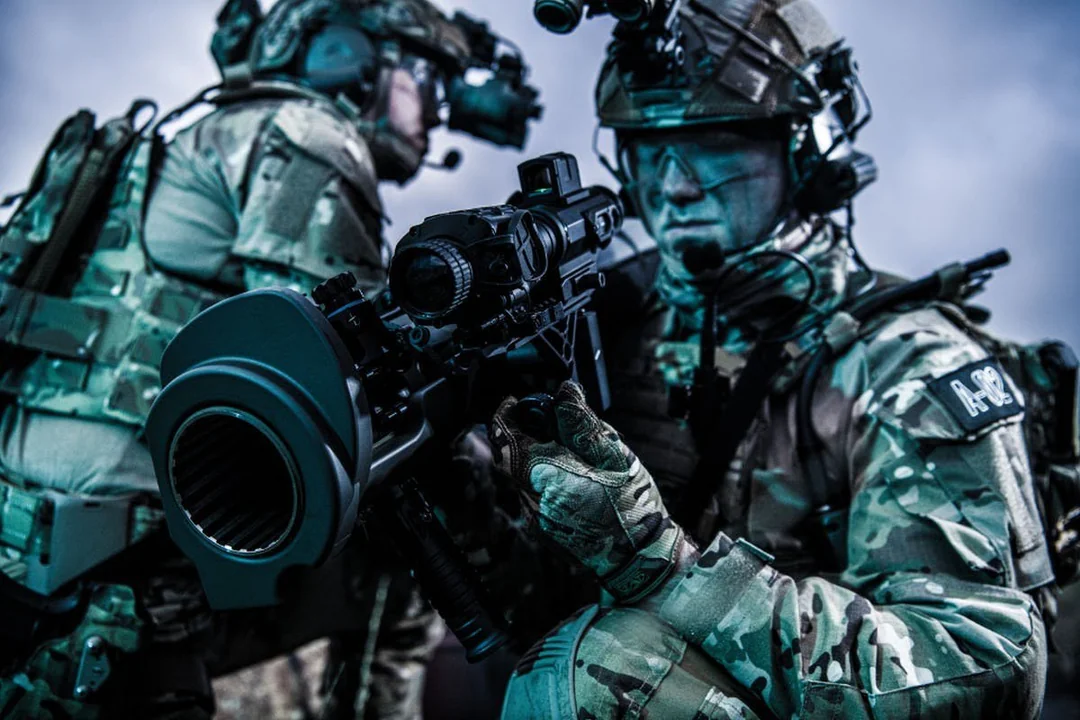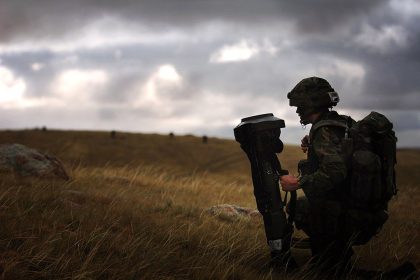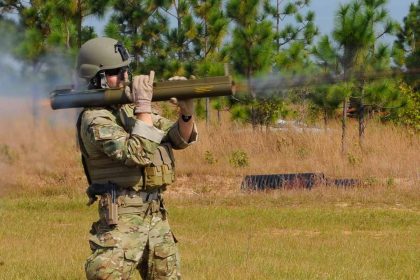The Shershen (Hornet) is a Belarusian variant of the Ukrainian Skif Anti-Tank Guided Missile (ATGM) and is a formidable competitor to the Russian Kornet. While both systems may seem interchangeable, the Shershen and Skif (an export version of the Ukrainian Stugna-P known as SKIF) boast slightly different applications. Manufactured by the state-owned joint stock company SRPC, the Belarusian Shershen offers a broader mission, with variants designed to defeat tanks, fortifications, light vehicles, armored personnel carriers, and offshore and riverine vessels. This article will explore the various features, capabilities, and variants of the Shershen, shedding light on its potential as a modern anti-tank weapon.
Design and Components
The Shershen “complex” comprises a collapsible tripod, a box-shaped control system, a launcher rail, a launch tube, and the command launch unit, which combines TV guidance and modular thermal sights. This comprehensive setup ensures accurate targeting and effective engagement of enemy armored units. It is worth noting that the Shershen is armed with two main types of missiles: the RK-2S, featuring a tandem High-Explosive Anti-Tank (HEAT) warhead, and the RK-20F fragmentation round for soft-skinned vehicle targets.
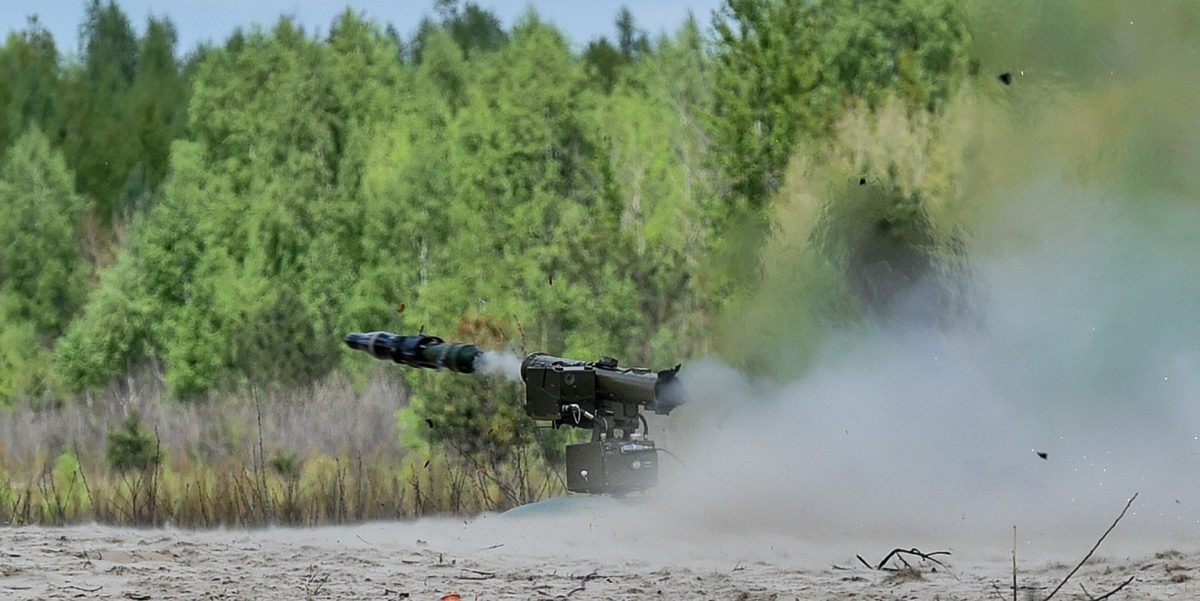
Capabilities
The Belarusian Shershen demonstrates impressive capabilities, with a maximum range of fire of up to 5,500 meters. Equipped with the RK-2S missile, it can effectively disable modern main battle tanks. The operator can utilize the 152 mm P-2B missile for even greater range and penetration, extending the effective range to an impressive 7,500 meters. The P-2B missile boasts a remarkable penetration capacity of 1,100 mm against rolled homogenous steel protected by explosive reactive armor. However, it’s important to note that the missile’s range is reduced to approximately 3 kilometers during nighttime operations.
Launch and Control
Like its Ukrainian counterpart, the Shershen is manually fired, with the operator directly controlling the missile from the launch unit. The operator can employ a portable control panel, conveniently housed in a specially designed suitcase, to remotely launch and direct the Shershen from distances up to 100 meters. For enhanced stealth and obstacle avoidance, the RK-2S missile is equipped with an in-flight elevation feature, lifting the missile ten meters above the Shershen’s laser beam to overcome terrain obstacles and reduce the risk of detection. As the missile approaches the target, it descends and precisely strikes the vulnerable space between the turret and hull of a tank, maximizing its destructive potential.

Firing Modes
The Shershen offers two firing modes to suit different tactical scenarios. In the “see and fire” mode, the operator manually guides the missile using a jamming-and-weather-resistant laser. By painting the target with the laser, the operator ensures precise guidance until impact. Alternatively, the operator can opt for automatic target tracking when launching remotely. In this mode, the operator selects the target, and the missile autonomously closes in, allowing the operator to monitor its trajectory and make necessary course adjustments.
Limitations and Current Deployment
Despite its impressive capabilities, the Shershen does have some limitations. One notable drawback is its relatively slow flight speed, with a maximum flight time of 24 seconds at maximum range. To ensure optimal results, the Shershen is typically tested against targets located between 3,000 to 3,500 meters away. As a relatively new addition to the anti-tank guided missile market, the Shershen has yet to make a significant impact against legacy systems and third-generation competitors like the Javelin or the Spike. However, the Belarusian Army has adopted the Shershen and found clients in Turkmenistan and Nigeria.

Variants
Shershen-D
This variant utilizes a tandem configuration, housing two 130 mm missiles side-by-side on a single pivoting mount. Weighing in at 59 kg, the Shershen-D is suited explicitly for light vehicles, armored personnel carriers, and offshore and riverine vessels. Its enhanced mobility and firepower make it a versatile asset on the battlefield.
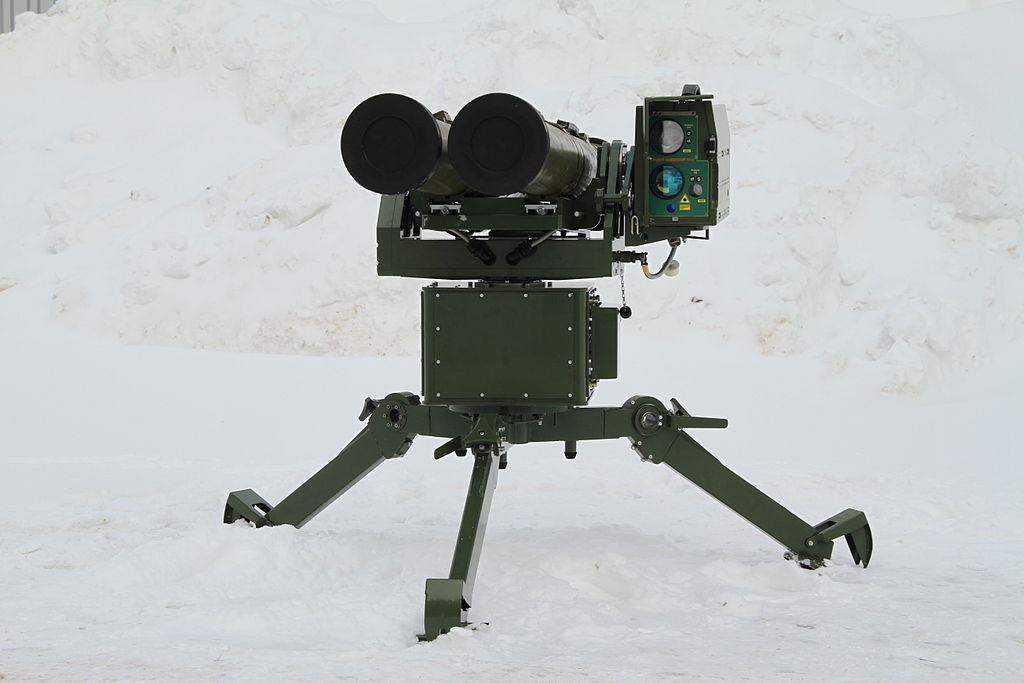
Shershen-Q
Designed for vehicle deployment, the Shershen-Q version features a launcher capable of accommodating four missiles. This variant closely resembles the Russian Kornet-D in its application and offers powerful anti-tank capability when integrated into combat vehicles.
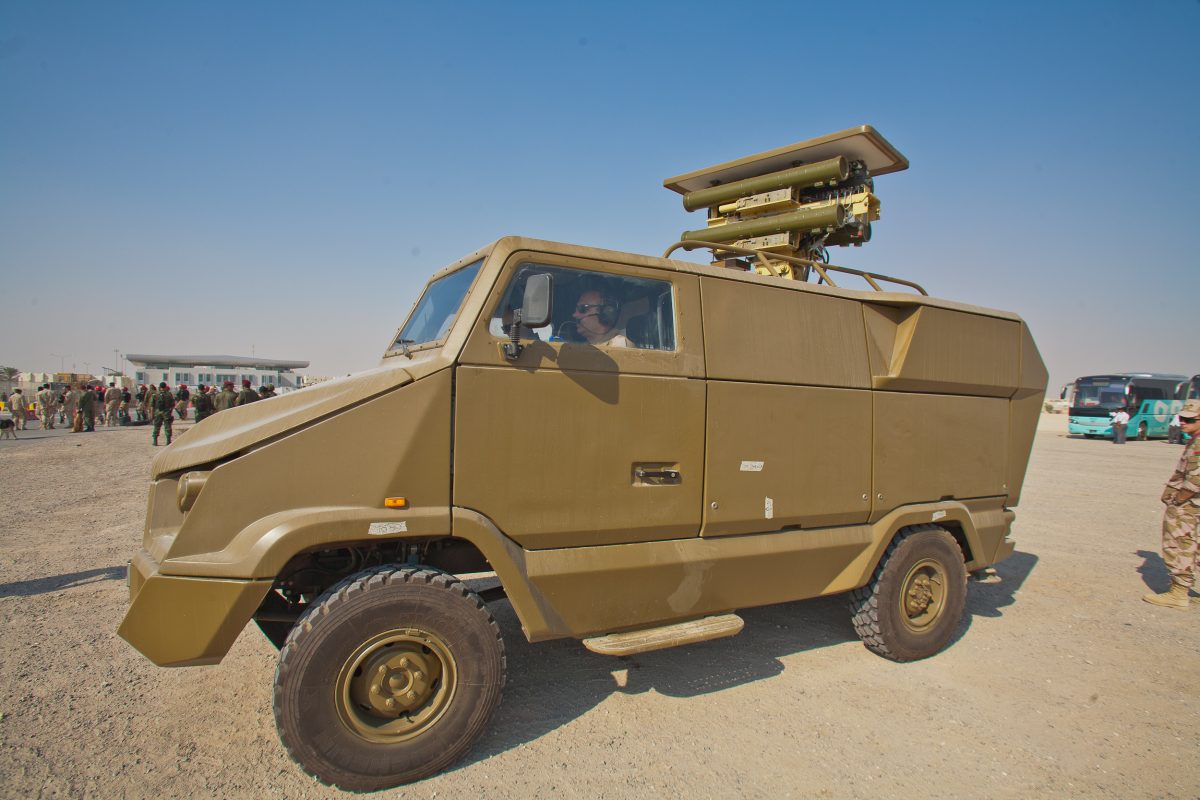
Shershen-M
Another vehicle-specific variant, the Shershen-M, equipped with a launcher capable of holding four missiles, provides flexibility in its munition selection. It can effectively launch various missiles, including the RK-2, RK-2V, B-2M, and RK-3 Korsar, catering to different mission requirements and target profiles.
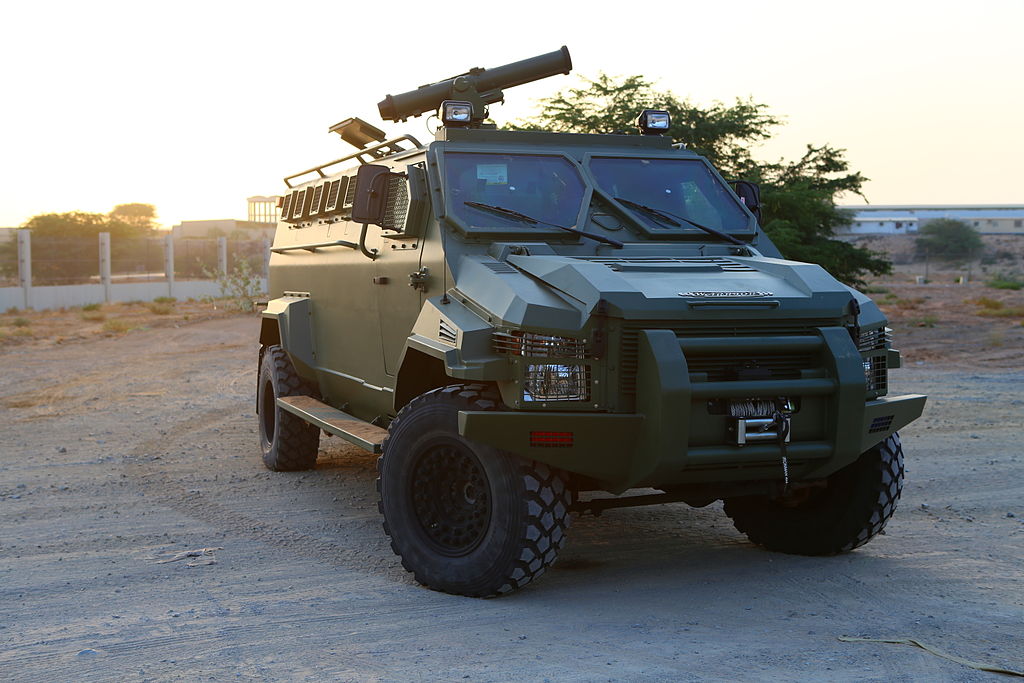
Shershen-L
As a lighter version of the Shershen, the Shershen-L sacrifices some range, with a maximum firing range of 2.5 km. However, this variant offers increased mobility and agility, making it suitable for specific operational scenarios where speed and maneuverability are prioritized.
Conclusion
The Belarusian Shershen stands as a noteworthy contender in anti-tank-guided missile systems. With its diverse range of variants tailored for different combat scenarios, the Shershen proves its adaptability and effectiveness in engaging armored targets, fortifications, and light vehicles. While still relatively new in the market, the Shershen has demonstrated its potential. With ongoing advancements and further integration into military forces, it may become a prominent player in modern anti-tank warfare. As defense technology continues to evolve, it will be intriguing to observe how the Shershen further develops and contributes to the ever-changing dynamics of the battlefield.
Technical specifications
| Country of origin: | Belarus |
| Manufacturer: | CJSC “SRPC” |
| Entered service: | 2012 |
| Armor penetration: | 800 mm / 1 100 mm |
| Range: | 5.5 km / 7.5 km |
| Missile length: | 1 360 mm |
| Missile diameter: | 130 mm / 152 mm |
| Fin span: | ? |
| Missile weight (in container): | 29.5 kg / 39 kg |
| Warhead weight: | 8 kg |
| Launcher weight: | 28 kg |
| Sight weight: | 16 kg |
| Control panel weight: | 12 kg |
| Warhead type: | Tandem HEAT / Fragmentation |
| Guidance: | Laser-guided |




